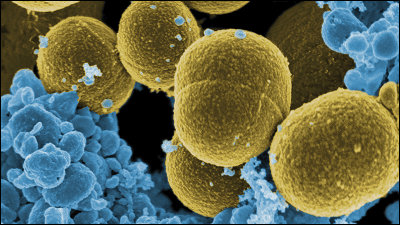The distance that the aerosol carries the new coronavirus is up to about 4 meters, and there is a possibility that the virus will spread from the 'sole of the shoe'

While researchers in various countries are researching the new coronavirus, 'the new coronavirus exhaled by an infected person is
Early Release-Aerosol and Surface Distribution of Severe Acute Respiratory Syndrome Coronavirus 2 in Hospital Wards, Wuhan, China, 2020-Volume 26, Number 7—July 2020-Emerging Infectious Diseases journal-CDC
https://wwwnc.cdc.gov/eid/article/26/7/20-0885_article
Droplets and Aerosols in the Transmission of SARS-CoV-2 | NEJM
https://www.nejm.org/doi/full/10.1056/NEJMc2009324
Exhaled 'Aerosols' Spread Coronavirus Up to 13 Feet, Shoes Carry Virus, Too
https://consumer.healthday.com/infectious-disease-information-21/coronavirus-1008/exhaled-aerosols-spread-coronavirus-up-to-13-feet-shoes-carry-virus-too-756797.html

In a paper published by a Chinese research team in the peer-reviewed medical journal
As a result of analyzing the samples, 70% of the samples collected from the ICU floor were found to have the new coronavirus. Researchers pointed out that the droplets containing the virus exhaled by people might have fallen due to gravity or the flow of air and adhered to the floor. In addition, the new coronavirus was also detected in the floor of the pharmacy in the hospital where COVID-19 patients were not present, so the research team said that 'the virus has spread throughout the floor' 'The shoes of medical staff are carriers of the virus' May be functioning as '.

In addition, viruses have been detected in computer mice, doorknobs, trash cans, bed railings, etc. that many people touch, and aerosolized viruses have also been detected in the air of the hospital room with COVID-19 patients. . The research team argues that the closer the air is to the patient, the higher the rate of detection of the virus, and 'the aerosol containing the virus was concentrated near the patient and where the air flows.'
However, aerosols floating in the air exceed 6 feet (about 1.8 meters), which is the 'social distance' necessary to prevent infection with the new coronavirus, and reach up to a radius of 13 feet (about 4 meters) ahead. The research team pointed out that it may be. As a result, Dr. Robert Glatter, who works at
This study pointed out the possibility that the new coronavirus could spread farther than previously assumed, but it also shows one light. As of March 30, 2020, there were many COVID-19 patients in the Hikamiyama Clinic, but the research team's investigation revealed that no medical staff were infected with the new coronavirus. In other words, it has been shown that medical staff can be protected from infection by wearing appropriate protective clothing and equipment and following infection control protocols.

In addition, the research results of research teams at Harvard University and the University of Pennsylvania using laser light scattering to trace the diffusion of aerosols emitted by humans during conversation are also reported in the peer-reviewed medical journal

by Evan Long
Related Posts:
in Science, Posted by log1h_ik







